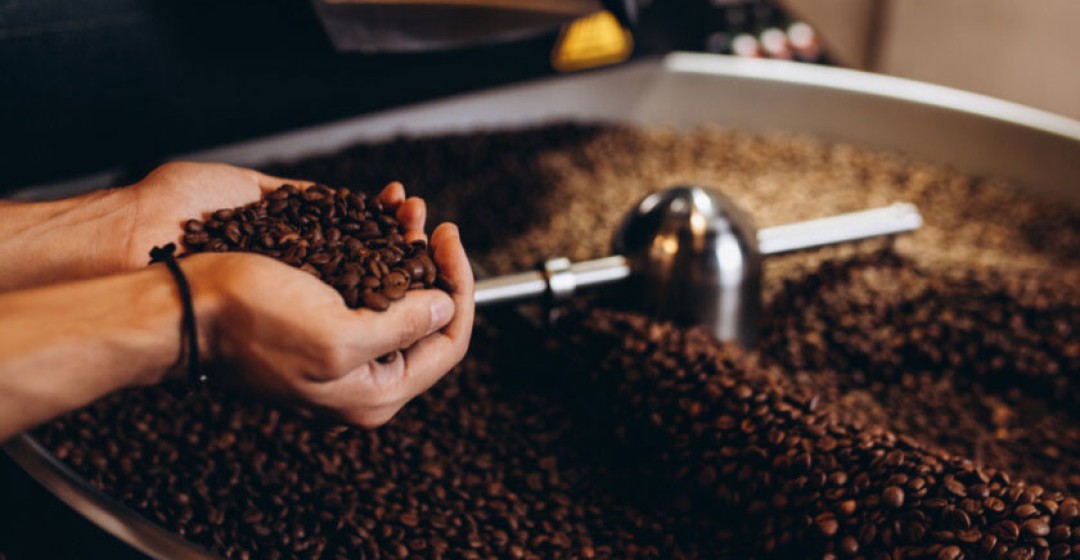Many people prefer one coffee roast over another. To get the perfect cup of any roast, there is extensive preparation and perfecting of the process known as roasting.
Roasting is a heat process that transforms raw beans into the fragrant and flavorful dark brown beans we know and love.
The task is a technical skill that combines science and art. It takes years of training to become an expert roaster with the ability to ‘read’ the beans and make decisions with split second timing. The difference between perfectly-roasted coffee and a ruined batch can be a matter of seconds.
Roasting brings out the aroma and flavor that is locked inside the green coffee beans. A green coffee bean has none of the characteristics of a roasted bean. It is soft, with a fresh grassy smell and little or no taste. Roasting causes numerous chemical changes to take place. The sugars, fats and starches that are within the beans are emulsified, caramelized and released as the beans are rapidly brought to very high temperatures. When they reach the peak of perfection, they are quickly cooled to stop the process. Roasted beans smell like coffee and weigh less because the moisture has been roasted out. They are crunchy to the bite, ready to be ground and brewed.
 Most roasters have specialized names for their favored roasts. In general, roasts fall into one of four color categories—light, medium, medium-dark or dark. The perfect roast is a subjective choice that is sometimes determined by national preference or geographic location. In the U.S., people on the West coast tend to drink a darker roast, while those on the East coast generally prefer a medium roast.
Most roasters have specialized names for their favored roasts. In general, roasts fall into one of four color categories—light, medium, medium-dark or dark. The perfect roast is a subjective choice that is sometimes determined by national preference or geographic location. In the U.S., people on the West coast tend to drink a darker roast, while those on the East coast generally prefer a medium roast.
THE ROASTS
Within the four color categories, you are likely to find common roasts as listed below. As coffee roasts get darker, they lose the original flavors of the bean and take on more flavor from the roasting process. Consequently, caffeine moderately decreases as the roast time increases. Regardless of roast level, all roasts will differ in taste. Two coffee varieties grown in different environments are likely to taste different even when roasted to the same level, so it is important to try a variety of coffee to find what best suits your taste.
LIGHT ROASTS
Light roast coffees have a light body and pronounced snappy acidity. There is no oil on the surface of the beans. The original flavors of the bean are retained to a greater extent than in darker roasted coffees. Light roasts retain most of the caffeine from the coffee bean. Community Coffee Company’s signature light roast is known as our Breakfast Blend.
MEDIUM ROASTS
Medium roasted coffees are medium brown in color with more body than light roasts. Medium roasts exhibit a more balanced flavor, aroma and acidity. This roast is often referred to as the American roast because it is generally preferred in the United States. Community’s American Classic Blend is a perfect example.
MEDIUM—DARK ROASTS
Medium-Dark Roasts has a richer, darker color with some oil on the surface of the beans. A medium-dark roast has a heavy body in comparison with the lighter or medium roasts. Our ground Café Special® is a better known medium-dark roast.
DARK ROASTS
Dark roasts are dark brown or almost black. The beans can have an oily surface and a pronounced bold rich body. As roasting times increase, acidity decreases which provides smooth mellow flavor. A perfect example of a dark roast is Community® Signature Blend Dark Roast blend which provides Dark rich satisfying flavor that Dark Roast drinkers are known to love.

